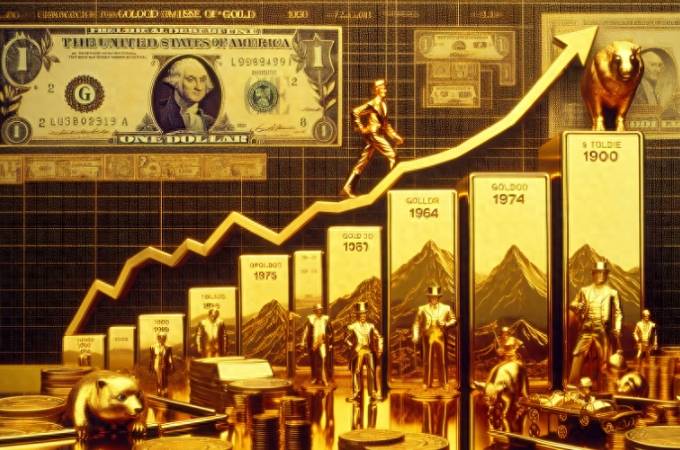OPEC Optimistic Alone: High Expectations for Long-Term Oil Demand Growth
OPEC's latest annual outlook predicts that strong global oil demand growth will continue until 2050, but other market participants are far less optimistic about the demand outlook.
The global benchmark Brent crude oil fell below $70 per barrel at the beginning of September, reaching the lowest level in 33 months. This is good news for consumers but a nightmare for OPEC+, for whom oil revenue is crucial.
Earlier this month, the oil-producing country alliance led by Saudi Arabia decided to postpone the increase in oil production for another two months to support oil prices, but so far it has been of no avail. The low global demand forecast, coupled with new oil supplies from non-OPEC countries, means that oil prices will remain low for a long time.
This has led some market participants to raise a question: Has oil demand officially reached a "peak" and will it be downhill from now on?
According to OPEC's own predictions, the answer is no.
The organization's "World Oil Outlook 2024" report released on Tuesday predicts that global energy demand will grow strongly by 24% from now until 2050. The organization also predicts that oil demand will reach 112.3 million barrels per day by 2029, an increase of 10.1 million barrels per day compared to 2023.
Advertisement
A considerable number of energy analysts seem to disagree with this view, especially those at the International Energy Agency (IEA). According to its annual medium-term outlook released in June, the Paris-based organization expects that demand will actually level off by the end of the 2020s, to about 106 million barrels per day. The IEA still believes that global oil demand is on the rise, but it expects slow growth and believes it will peak in this decade.
In recent years, the divergence between OPEC and the IEA in energy forecasts has increasingly attracted attention, with the latter striving to promote net-zero emissions.
Meanwhile, S&P Global Commodity Insights believes that the medium-term outlook for global oil demand is between the expectations of the two aforementioned organizations, with demand peaking at 109 million barrels per day in 2034 and gradually falling below 100 million barrels per day by 2050.
In contrast, OPEC expects that global oil demand will reach 120 million barrels per day by 2050.All parties agree that the demand for oil in developing countries will decrease, while the demand led by emerging markets such as India will rise.
Mid-term Outlook for Oil Demand and Prices
Analysts generally have a pessimistic outlook for demand and prices in the mid-term for the oil market. Despite OPEC+ announcing in early September that they would extend crude oil production cuts until December in an attempt to limit market supply.
Dave Ernsberger, the head of market reporting at S&P Global Commodity Insights, told CNBC: "The additional two months of production cuts have not convinced any skeptics that this will be of great help in supporting prices. So that's the issue at hand. But the bigger question is, have we actually passed the moment when oil demand has peaked?"
Ernsberger pointed out the growth of alternative forms of energy, including the increasing use of biofuels in the shipping industry. He said: "We are entering a post-demand growth era, not a post-oil era, but a post-growth era. How will OPEC+ and the market adapt to a world with slow or no growth in overall demand?"
China is the world's largest oil importer, but with its path towards a dedicated electrification, the prospect of rising oil prices has also become bleak.
Li-Chen Sim, a non-resident scholar at the Middle East Institute based in Washington, told CNBC that "the biggest threat to OPEC+'s efforts to boost oil prices is external threats," mainly including "low demand, oil supply from non-OPEC+ countries; some members of OPEC+ producing more than their allocated quotas."

Sim said that estimates from international and Chinese sources show that China's demand for oil and refined oil products is slowing down.
He added, "The reduction in oil consumption also has a structural factor, driven by the country's conscious efforts to reduce its high dependence on oil (and natural gas) imports, reflected in policies such as the popularization of electric vehicles and the encouragement to expand renewable energy and nuclear energy."
In the short term, OPEC+ may still restore some production in December, while several countries in the alliance produce more than their quotas, and non-OPEC+ oil-producing countries such as the United States, Guyana, Brazil, and Canada will provide more supply to the market.In response to this, Ernsberger stated, "As long as there is a threat of these supply recoveries in the market, it is difficult to envision a significant increase in oil prices."
Many analysts believe that, in the long run, the ultimate decline of the oil era (if it truly occurs) will be due to changes in demand rather than a reduction in supply.
As the late Saudi Sheikh Ahmed Zaki Yamani once said in 2000: "The Stone Age did not end because of a lack of stones, and the oil era will end, not because of a lack of oil."
Leave A Comment